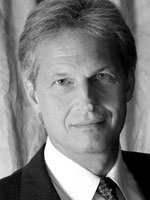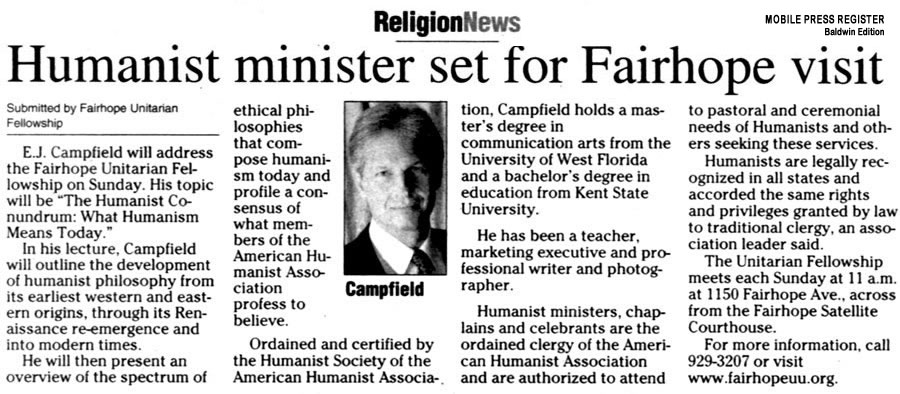The Humanist Conundrum
and other talksby E. J. Campfield, H.S.
Since 2006, I have been a secular Humanist minister, certified by the Humanist Society (HS) of the American Humanist Association. Humanist chaplains/ministers and celebrants are the ordained clergy of the AHA and authorized as such to attend to the pastoral and ceremonial needs of Humanists and others seeking these services, legally recognized in all states and many countries and accorded the same rights and privileges granted by law to priests, ministers, and rabbis of traditional theistic religions.During the summer of 2007, I addressed the congregation of the Fairhope Unitarian Fellowship and both congregations of the Unitarian Universalist Fellowship of Mobile on the topic The Humanist Conundrum: What Humanism Means Today. Additionally, I moderated the Secular Humanism topic discussion at a four-part colloquium on Alternatives to Traditional Religions at the Fairhope Unitarian Fellowship in October 2007. I have given quite a number of other talks and presentations to Unitarian congregations, a sampling of which are also represented below.
· The Humanist Conundrum: What Humanism Means Today
Talk first given June 10, 2007
E. J. Campfield is a secular Humanist minister. Formerly a literature and language teacher, writer and literary translator, he has pursued intense personal study of early Christian literature and the writings of Second Temple Judaism. He addresses a topic of interest to many Unitarian Universalists.
- Listen to MP3 audio of this talk CLICK HERE
· Apocalypse Now & Then
Talk first given September 14, 2008
As it was at the turn of the millennium in 2001, apocalypticism is again in the headlines with mystic dates in 2012 looming large in the public imagination. Join us as we look at several ancient and modern cultic movements from both Jewish and Christian traditions that have touted specific prophecy about "the end of the world" and discover the one significant trait all of them have had in common.
- View speaker's full text notes CLICK HERE
· Luke's Nativity Story as Early Christians Might Have Experienced It
Presentation first given December 13, 2009
Join us as we look behind the familiar Nativity Story in Luke's gospel, revealing its literary origins and artistic devices at work. Early Christians perceived and enjoyed this narrative much differently than it is understood today. We explore a revolutionary new theory about the specific purpose for which Luke's gospel was composed and how it was actually used in synagogues and early Christian liturgy.
- View speaker's introductory notes CLICK HERE
- View speaker's PowerPoint presentation CLICK HERE

